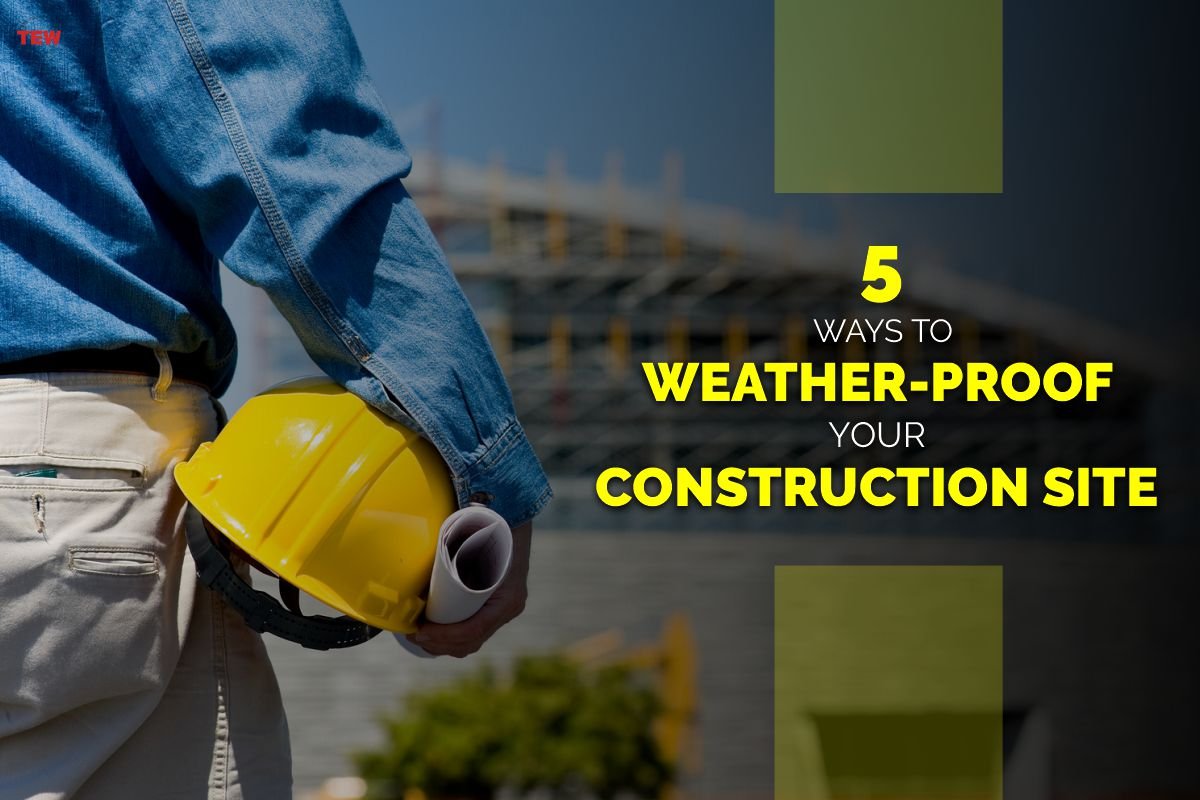Construction sites areone of the most challenging industries to work in. The domain is capital-intensive and labor-intensive, so money always seems to run short. Accidents can happen on job sites despite the best precautions. While you can curb these risks by implementing some measures, the weather is a factor beyond your control. It can disrupt work without warning, and you can do nothing about a sudden snowstorm or spell of rain.
Fortunately, some measures can take you a long way in weather-proofing your construction site. Let us list the ones you must implement before starting every project.
Below are the five best ways to Weather-Proof your Construction Site:
1. Know your Threats
It is crucial to know your threats before implementing measures to address them. Windy conditions and hurricanes are common, so make sure you have arrangements to store materials and brace building components. Rain and snow can cause flooding and compromise the structural integrity of the building. Constant exposure to the elements is also harmful. Once you have a checklist of threats, it is easier to strategize control measures.
2. Timing is Crucial
The smartest way to deal with unfavorable climatic conditions is to steer clear of them in the first place. Timing is crucial, specifically for short-term projects that are likely to wrap up within a few months. You can schedule the project according to the weather in your area. It is easy to avoid the months when things go haywire and complete and deliver the project beforehand. You can check the forecasts to be extra sure and safe.
3. Invest in a Construction Envelope
Most construction projects are long-term, so you will probably have to struggle with severe weather at some point. You can Protect your Construction sites from the weather and the elements with RWES construction envelopes. The weather-proofing solution comprises fully tensioned panels that are weather-resistant and mold-safe. They have a life expectancy of years, so you can rely on them to safeguard your long-term project year after year.
4. Have an Action Plan
While these provisions cover your construction site to a significant extent, things may still get out of control. It is vital to have action plans for all types of weather. They should outline what the team needs to do during thunderstorms, winds, heavy rain, snow, and hurricanes. Highlight measures to protect people and equipment as both are valuable. A written plan is essential to comply with the guidelines and keep your project on the safe side.
5. Train your Team
Your construction site safety depends greatly on your team. If the workers are capable of handling unforeseen emergencies, no risk is hard to mitigate. Train your team to ensure they can handle all kinds of situations, from bad weather to accidents, equipment breakdown, and material shortages. Training makes them confident, and they can tackle adverse scenarios without delays and apprehensions.
It is advisable to go slow and finish one project before starting the next or take only as much work as you can handle. It reduces the number of unfinished tasks on the sites. Fewer incomplete sections lower the risk of damage and loss during storms and hurricanes. Following these measures can go a long way in safeguarding your job site from adverse weather.
Summing Up
Safety standards have become crucial in every section of business industry. Construction sites and works are the primary sector where safety and precaution measures must be taken. In case of sudden changes in weather, the site should be prepared in advance to tackle any natural condition that may hamper or damage the construction business conditions. Hence, these weather-proofing steps should be followed.




